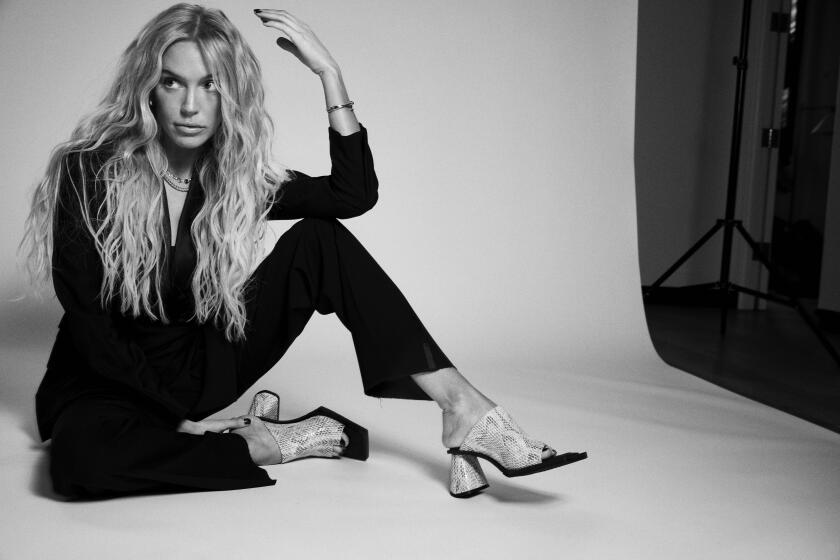Inside the world of L.A.’s gym-fluencer ecosystem
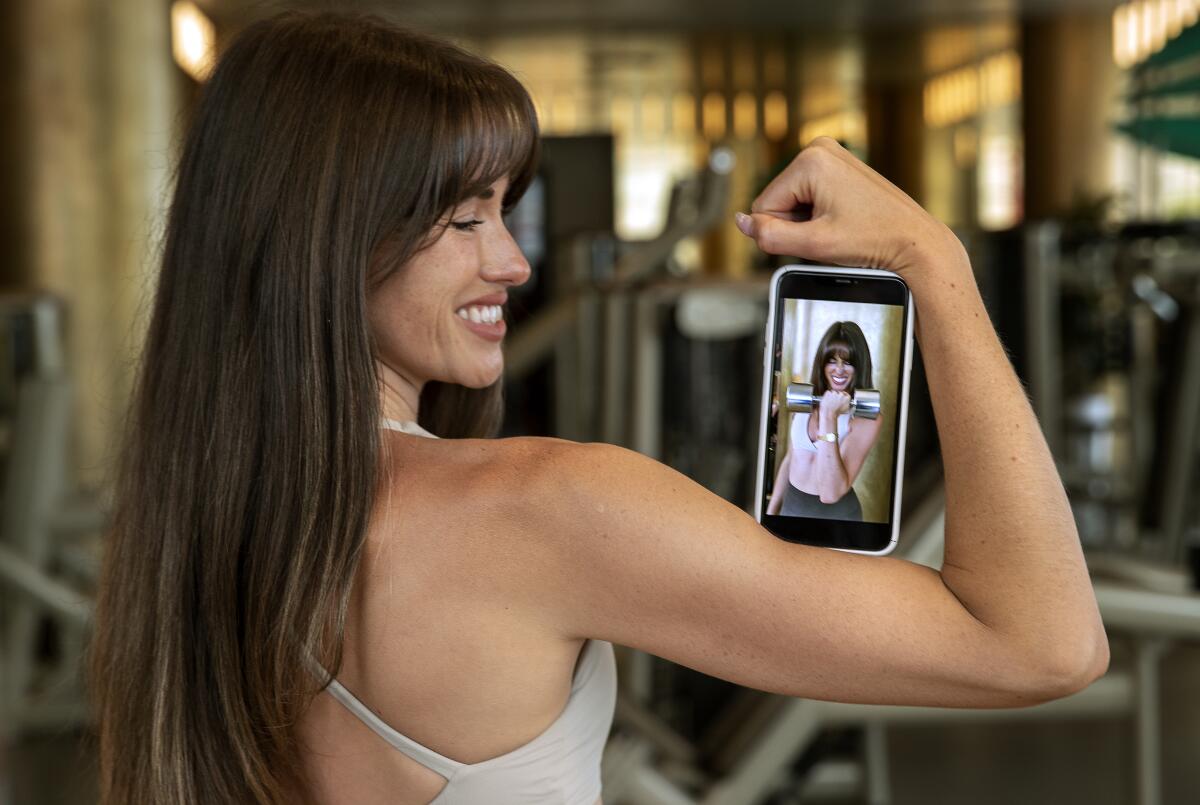
On a recent afternoon in Beverly Hills, Kylie Jenner worked out at the Alo Wellness Club. Her circuit included a sled push and walking at an incline on the treadmill. Kendall Jenner also appeared, apparently recording her younger sister’s set on the hip abduction machine at her behest. Months earlier, when I took a turn at the bespoke, private gym situated in the activewear brand’s workout headquarters on Wilshire Boulevard, in-house trainer Louis Chandler also invited me to hand over my phone. “People often want to be filmed,” he said.
So they do — in Los Angeles, anyway. When visibility is currency, influencers have unveiled the most vulnerable activities: waking up, eating, getting dressed. Now, exercise — a sweaty, uncomfortable experience once executed under baseball caps and oversized sweaters to avoid attracting attention — has too become primed for public consumption. And, judging by the 190 billion video submissions filed under #gymtok, there’s a market for it. Between an undeniable emphasis on aesthetics and obsession with wellness, Muscle Beach is no longer confined to a strip of sand in Venice, but stretched across the entire city.
For U.K.-founded fitness apparel company Gymshark, it was either swim in L.A. or sink everywhere. “[Conquering the L.A. market] was critically important,” claims Noel Mack, Gymshark’s chief brand officer. “Put simply, without L.A. gym culture, Gymshark wouldn’t be here today … and relationships with athletes and influencers remains an absolute cornerstone of our brand awareness.”
Before the true dawn of influencer marketing, Gymshark began to send branded stringer vests and tees to YouTube powerlifters on the West Coast. Two years later, they flew their favorites to their hometown of Birmingham, England, to connect with the brand. During that time, sales amounted to roughly $450 U.S. a day. After the influencers descended, the brand brought in nearly $40,000 in 30 minutes.
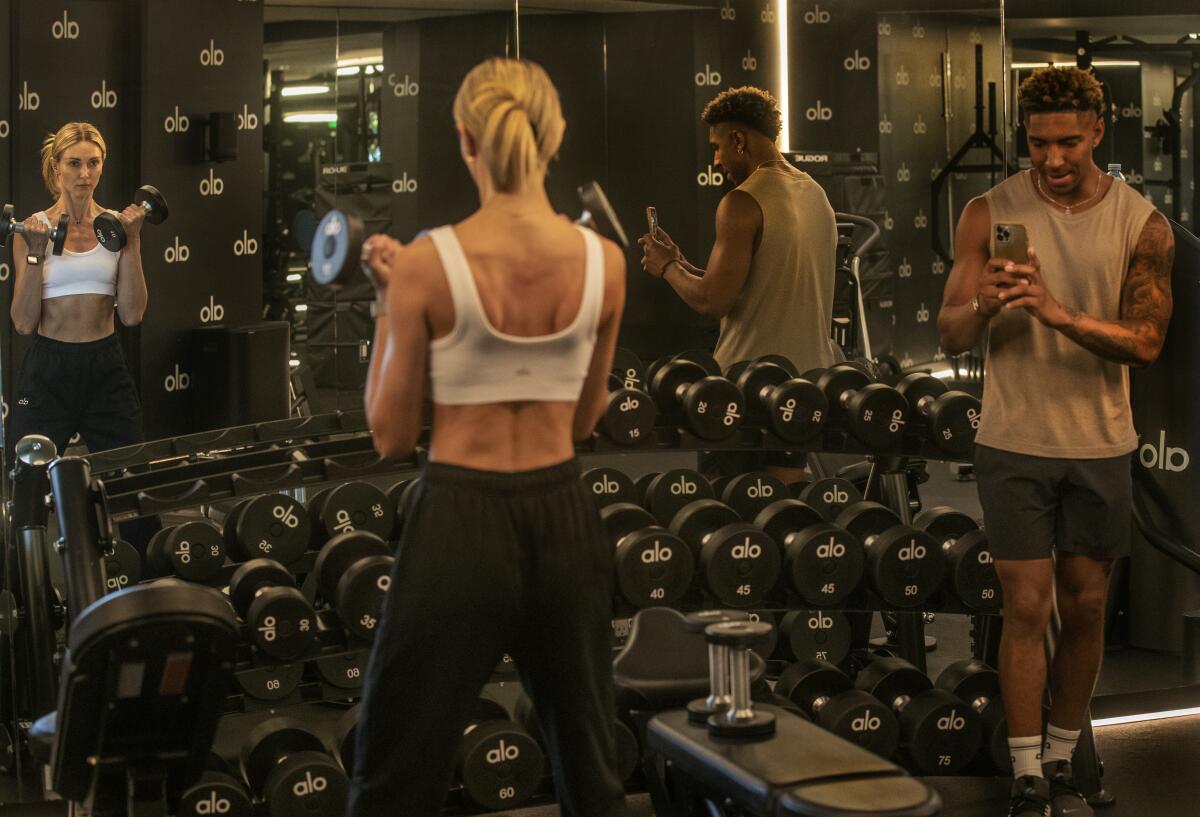
L.A.’s fitness fever has defined the “gym-fluencer” ecosystem more keenly than ever before. You’ve likely seen them: sweat-free with coiffed hair, coordinated outfits and impossibly cut physiques. The more subtle among them might rest their phone against a water bottle to shoot each set from a low angle, while others brazenly position tripods or recruit the help of workout partners (“swolemates”). Regular gymgoers are now all-too accustomed to their appearance. Sales consultant Myles Field, who recently moved to West Hollywood by way of D.C., San Diego and New York, describes the influencer infiltration of his local gym as “next level.” Recently, Shawn Mendes approached him to share a machine.
“I see [gym-fluencers] every time I’m in the gym. You always know who they are,” says Field. “In other cities I’ve lived in, there are pockets of people that care about working out, but L.A.’s emphasis on self-preservation creates a different relationship with fitness entirely.”
Silke Hensel, chief marketing officer of the recently opened downtown L.A. gym John Reed Fitness, agrees. “L.A. is the fitness epicenter of the world. If you can succeed with a fitness brand or concept in L.A., you instantly know it’s viable for the rest of the country.”
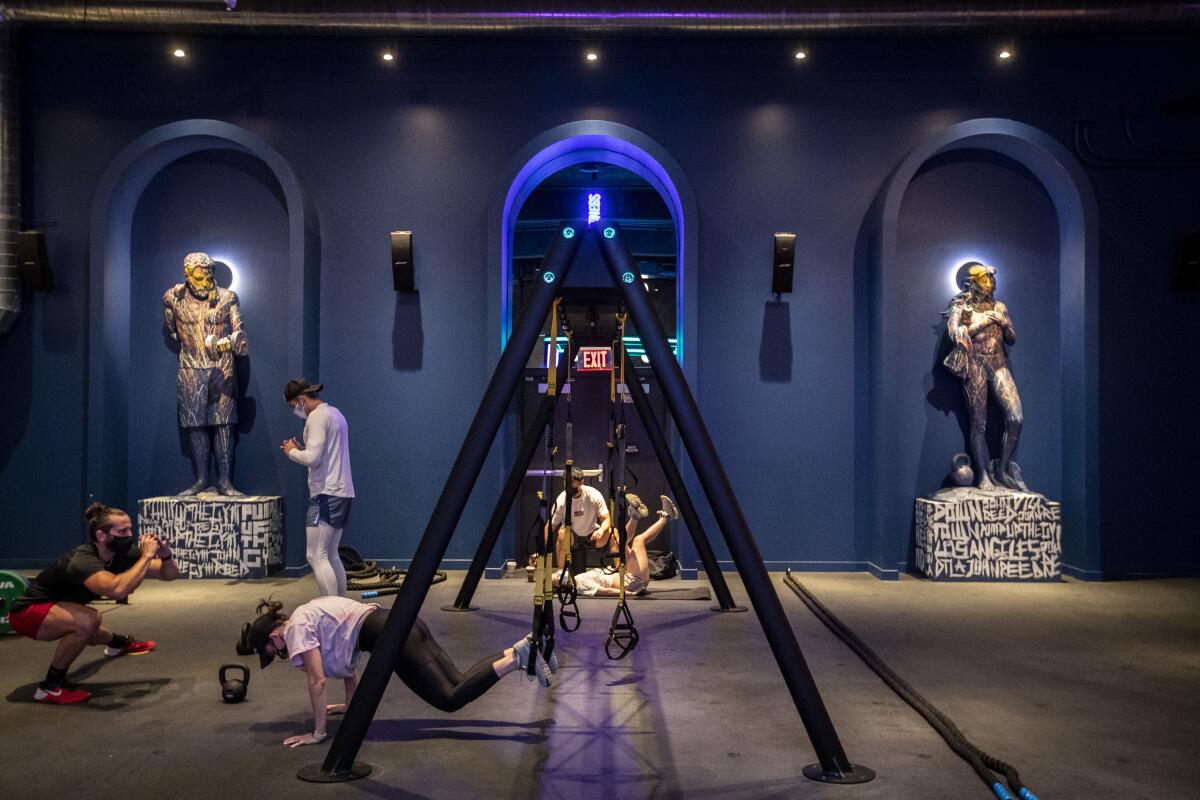
Founded by RSG, which also acquired Gold’s Gym in 2020, John Reed’s downtown L.A. branch became the gym’s first American location. Branded as “33,000 square feet of style and sound,” it is a gym designed to be seen in more ways than one. Known for its nightlife-reminiscent features and mood lighting, John Reed is promoted as a “club before the club” — and, like most clubs, it relies on word of mouth. Hensel describes the relationship between John Reed and influencers as “win-win.”
“The No. 1 thing any brand wishes they had more of was content,” says Hensel. “Creating quality content is expensive and time consuming. Iinfluencers help us solve that challenge .… Our members don’t look at John Reed as a gym they have to go and work out at, but rather a place they want to be. Not only that, it’s a space they want to show off.”
Six years ago, U.K.-native Louis Chandler relocated to Los Angeles from London when his career as a semi-pro footballer ended. After a stint hosting group fitness classes, he moved into private training. Now a fixture at Alo Wellness Club as head coach, his Instagram feed resembles a Victoria’s Secret casting call. A partner workout with Kendall Jenner and Hailey Bieber is pinned at the top.
“There is a lot of pressure to be visible and have an online presence as a trainer in L.A. because now we say our online presence is often our first or only impression on potential clients,” he says.
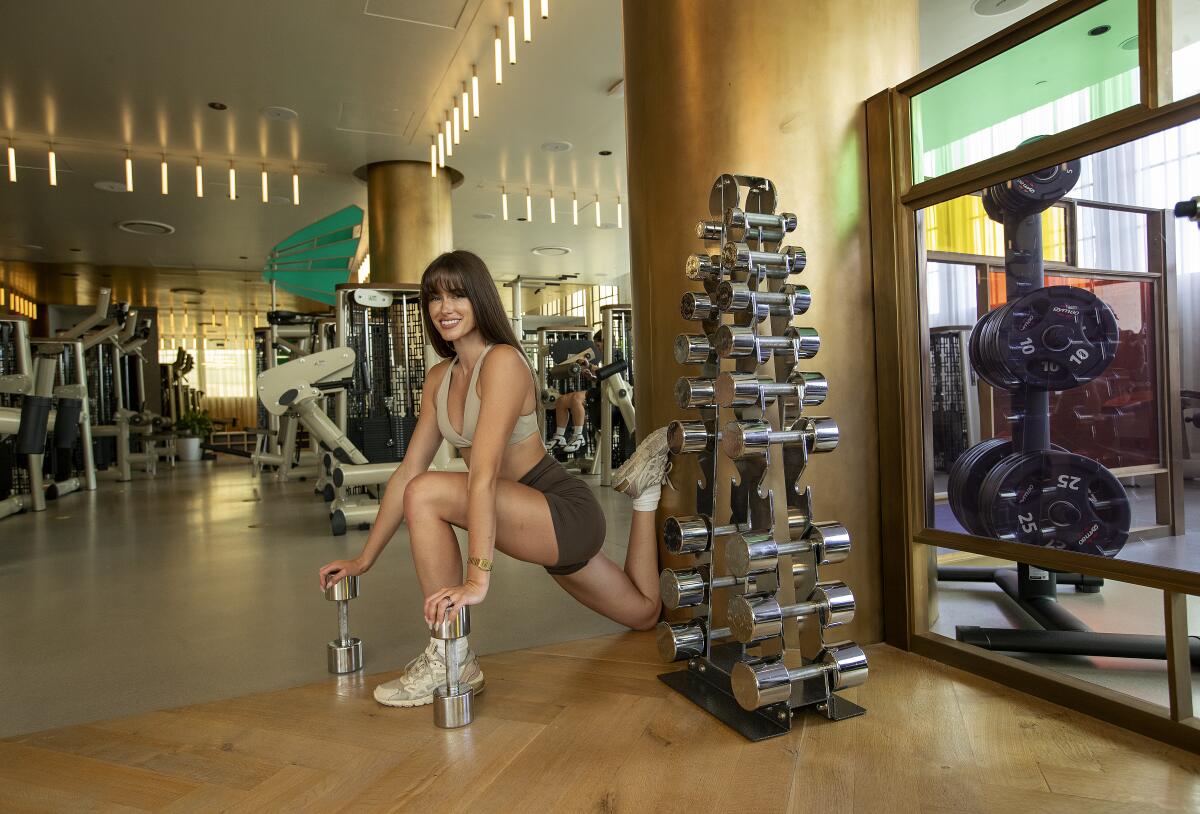
For trainers without A-list associations, climbing up the fitness food chain relies on showcasing a consistent product: themselves. Liz King built a significant following — along with online training business Made For Me Fitness — from sharing clickable content that shatters workout and diet myths. Propagating sustainable fitness is an atypical approach for a fit-fluencer, many of whom hope to be algorithmically rewarded with fast-working weight-loss hacks. When King left North Carolina for L.A. in January, the shift in gym culture — and dramatic uptick in fitness influencers — was immediate.
“Los Angeles is much more health-oriented, but it’s also more focused on aesthetics, which is not exactly the same thing,” King said. “The influence of celebrities is also more significant here, as they often visit the same gyms, leading many people to try the latest diet or workout class if they see an actor or model doing it .… [As a trainer,] the pressure to succeed can be overwhelming, particularly in a fast-paced, oversaturated industry.”
Upon her arrival in L.A., King joined Hollywood social-fitness club hybrid Heimat. Another RSG-owned concept, a Heimat membership costs $350 per month — far eclipsing that of luxury gym franchise Equinox, and almost tripling John Reed’s monthly fee. The distinctions don’t stop there. Heimat has a vastly different outlook on club promotion and content creators at large, with imposed filming restrictions throughout the space. Similarly to Soho House, they also require a social media review to be approved.
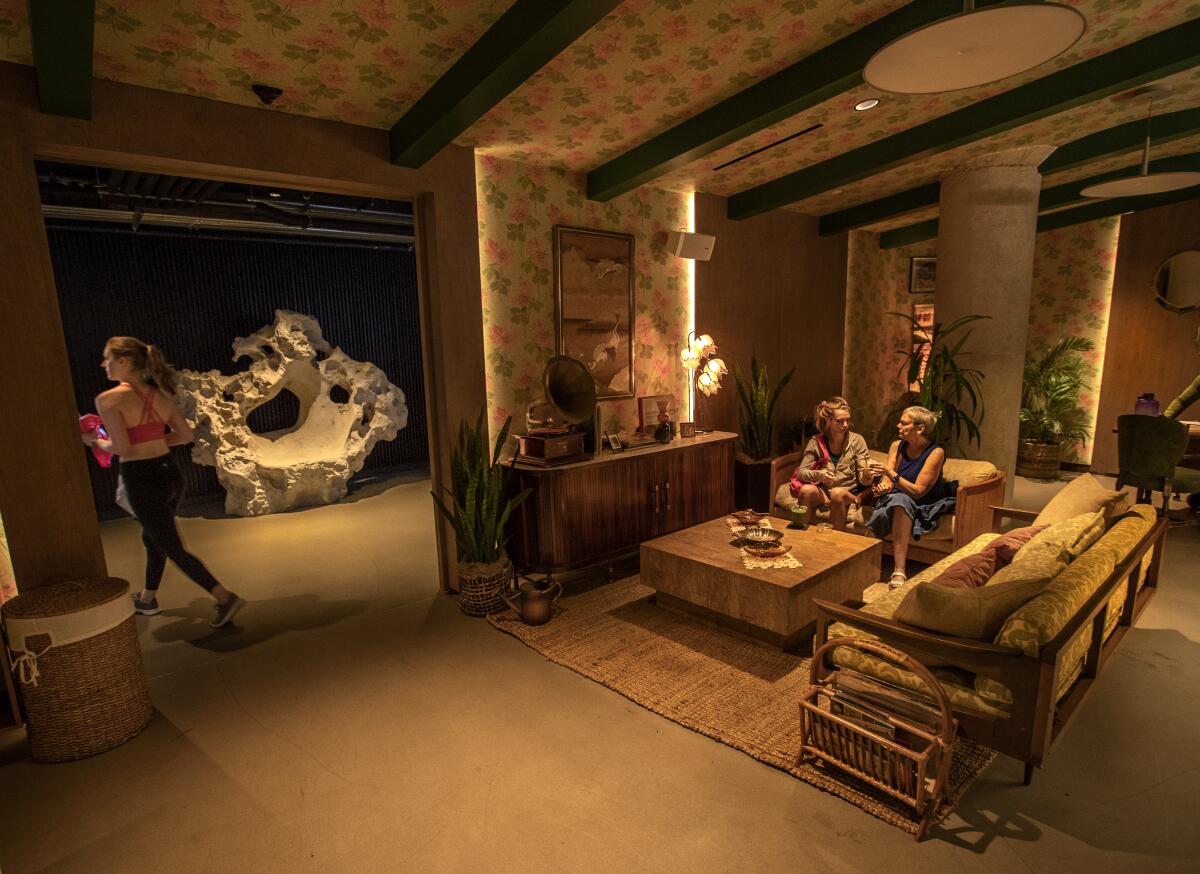
“When we created Heimat, we specifically wanted to avoid Heimat being thought of as just a space for influencers to film content,” says Matt Radmanovich, the gym’s head of communications. “That’s why we’ve been pretty strict about filming within the club. Sure, some people will post, but as a members club we also think privacy is of the utmost importance which also is a guiding philosophy.”
Ironically, Heimat’s carefully cultivated exclusivity has made its gym particularly appealing to aspiring influencers, says Radmanovich, even when “the vibe is so organic and not positioned for that world.” Liz King, who spends an average of three hours a day creating content between her own workouts and check-ins with clients, will occasionally film her own fitness routine from Heimat. She notes her process has never proved an issue with the gym or other patrons.
“I understand that seeing a camera in a space that feels vulnerable can be unsettling for some people, but I always make it clear that I won’t be filming them or posting anything without their permission,” King says. “By showing respect for their time and space, most people are understanding and let it go easily.”
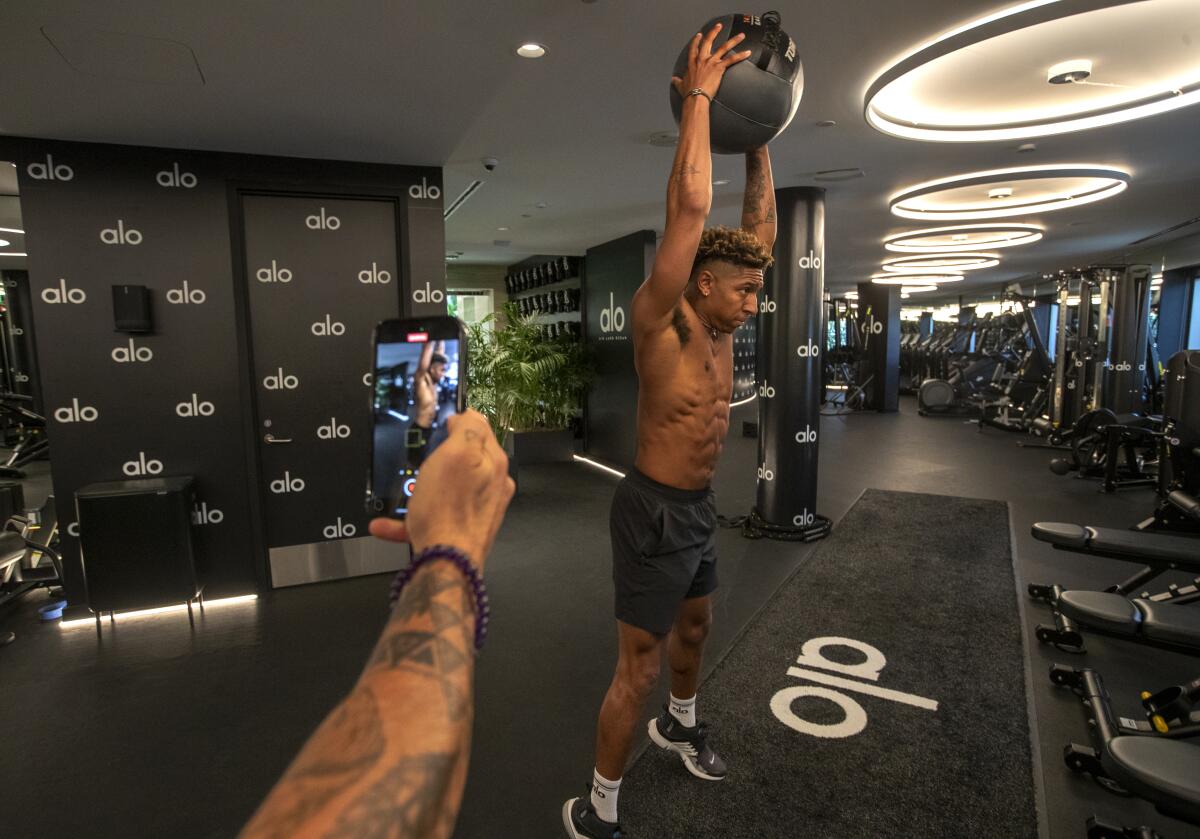
While King utilizes social media solely to bolster her online business, for Giorgio Merlino, creating fitness-specific content came well before his career as a trainer. When the Men’s Health cover star realized that the only “respect”-worthy outlet for professional athletes in his native Italy was soccer, he moved to L.A. to become Alo’s head trainer — becoming a regular fixture on Alo Moves, the brand’s fitness class platform. Now, he estimates 30% of his time is dedicated to personal training sessions, focusing the majority of his time “sharing” his knowledge.
“At the beginning I was just considered a good-looking big guy, but now people see me for what I can teach from my own daily experiences,” Merlino says. “I truly believe the fitness space started growing and evolving thanks to social media.”
As seductive a proposition as built-in promotion may be for brands, it does present challenges. In a city where there is no shortage of real-life success stories, anyone with a smartphone might be deluded into thinking they’re up next — forcing content-friendly gym John Reed to strike a “delicate balance” between the polarities of members who are working out and, or just … working. This, Silke Hensel notes, is especially difficult while encouraging those growing their audience from a small number.
“Everyone these days thinks they are influencers,” he says. “Because John Reed has established a reputation as a great spot for making content, we make sure that our members who are truly making innovative content that reaches a wide audience have the freedom to do so without impacting the remaining members’ experiences.”
Last year, Gymshark celebrated its 10th birthday with a workout event at Muscle Beach. L.A.-based bodybuilder David Laid was in attendance, the brand’s new ‘“creative director of lifting.” For Gymshark, the partnership represents a whole new frontier in influencer marketing. What Laid doesn’t know about the bodybuilding audience, says Noel Mack, “isn’t worth knowing.”
“Marketers sometimes think the word “influencer” can be a bit of a dirty word but … who better to be curating the products, imagery and digital experience?” says Mack. “People used to see influencer marketing as bottom-of-the-funnel marketing, but the next stage is allowing an influencer to actually input on the product before it even gets created.”
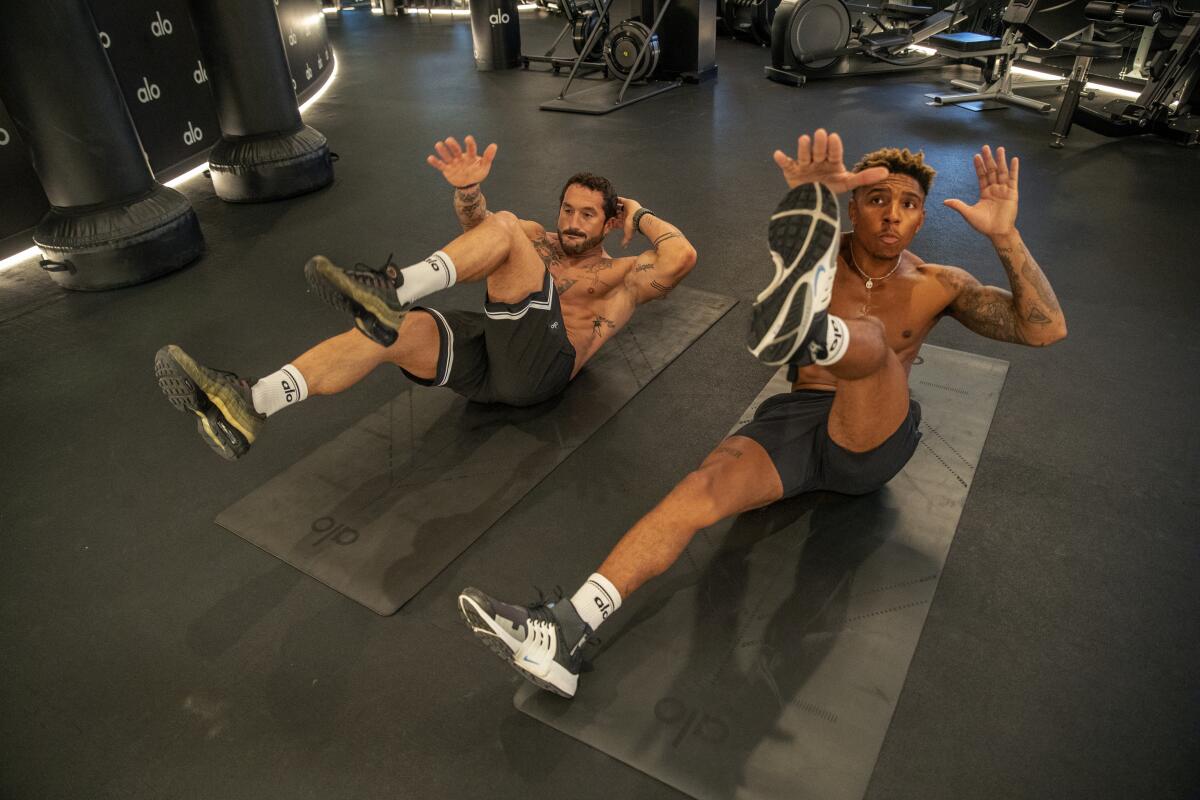
Merlino believes gym-fluencers are expanding the idea of exercise beyond a mere means to an aesthetic end — liberating both sedentary and hyperactive types from an ‘“ll or nothing” approach to fitness. Moreover, as trainers reveal their mistakes, anxieties and form faux pas, fitness spaces as a whole feel more accessible. “If training was for a few, now people who don’t train have become a niche,” says Merlino. “Having people asking for advice and guidance is what makes me wake up with a smile every single morning.”
Specifically, King credits a rise in female gym-fluencers for an uptick in women populating the weights section — dismantling the long-held misconception that building muscle is synonymous with a “bulky” body type.
“People, especially women, grew tired of wasting their lives trying to be thin, constantly dieting and attempting to lose weight,” she says. “Although the industry still has a long way to go, the more trainers like myself educate and inspire people to choose sustainable fitness methods, the more the industry will have to adapt to remain relevant.”
“It’s no longer just a question of looking good but feeling good,” echoes Merlino. “‘Strong is the new skinny’ is one of my mottos.”
Nonetheless, they do look good, and that can feel like a barrier to entry. But, if the prospect of entering any L.A. gym feels overwhelming, just remember: You don’t have thousands debating your tricep dip depth. You don’t have to deal with the complexities of positioning a tripod to record each expertly executed set. You don’t need to fight off the guilt when you go a week without documenting a workout. You could go a week without working out at all. It doesn’t matter if you’re motivated or intimidated, as long as it gets you to the squat rack. Otherwise, simply stroll — or scroll — on by.
“Honestly the way they look is incredible, and I find it inspiring,” says Field, the West Hollywood sales consultant. “Mostly, I appreciate the look for what it is and move on with whatever I’m doing. Ultimately, It’s their job, they’re just working.”
Watch L.A. Times Today at 7 p.m. on Spectrum News 1 on Channel 1 or live stream on the Spectrum News App. Palos Verdes Peninsula and Orange County viewers can watch on Cox Systems on channel 99.

